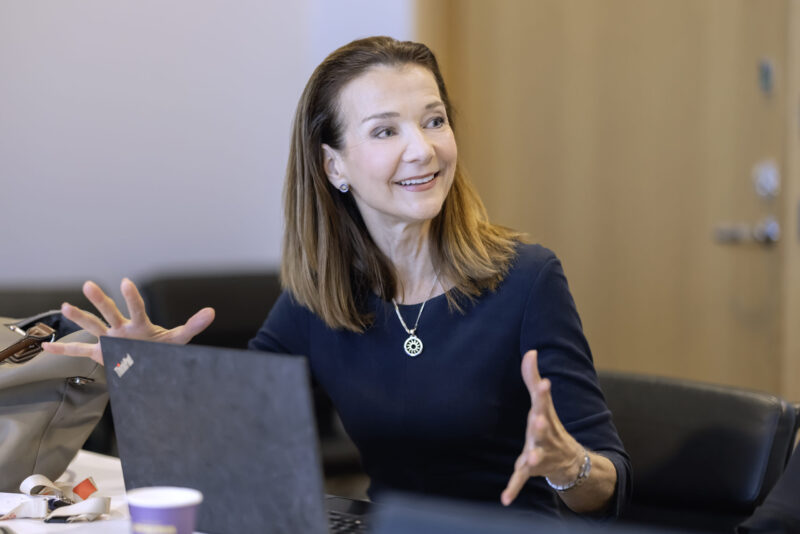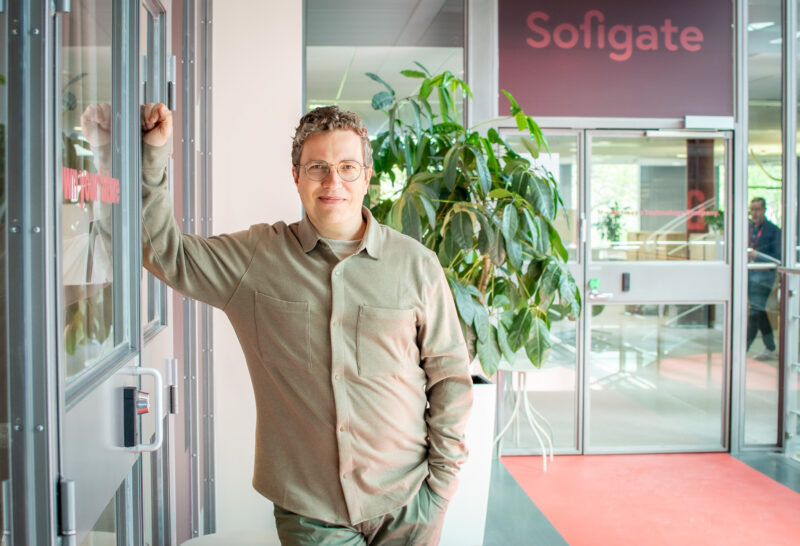Power to the people – Five things I learned about taking people along on the digital transformation journey
Transforming an organisation with business technology always comes down to the people who do it. They are the ones who transform the mindset, the culture, and the way of working within an organisation.
When planning a change, focus on these five key elements to engage, motivate, and align everyone around a shared vision as a leader.
1. Create an understandable vision and get excited about it
When your company is undergoing a transformation, try to be as concrete as possible in your story about where the organisation is heading and why, with the new ways of doing things. Everyone in the organisation needs to understand the why – this is what the vision and the story reveal. It’s equally exciting for the organisation to understand how things will get better what kind of challenges are ahead. You want everyone to share the same vision and to be fully onboard, so transparency and honesty is the key.
Start by overcommunicating to ensure everyone gets the message. In sports, teams have a playbook and go through repetitive drills to embed strategies into muscle memory. Similarly, in business, repeating key messages and practices helps team members internalise and execute strategies effectively. Provide tools like a dedicated site and newsletter to inform those most interested and hold on to your weekly team meetings to share updates and to address tough questions – and to keep everyone aligned.
2. Embrace openness and inclusivity
Transformation often brings significant changes that can be unsettling and even painful. Luckily, the pain can be alleviated with the right amount of open communication. By letting people express their concerns and contribute ideas, you provide the way to engage in the change in a meaningful way. This lays the foundation for a more open and collaborative culture.
One great way to promote openness is to have the management give updates in the form of morning coffees or similar occasions as well as openly sharing what the status and the next steps are. The more informal these types of get-togethers are, the better. Just find the way that fits your culture and be ready to stretch the traditional ways to foster inclusivity and openness.
3. Invest in continuous learning and skill development
Adopting new ways of working, let’s call it digital transformation, demands new skills and competencies. This is the most important area when it comes to embedding change into your team’s daily work and habits. Too often this part of change is overlooked and the whole initiative does not reach the full potential.
It’s recommended that there is a clear learning and development strategy for upskilling (e.g. enhancing existing skills) and reskilling (transitioning to a different role) the employees. In practice, these measures could include training sessions, online courses and learning in change projects.
In today’s hectic work environment, my advice is not to overlook the power of reskilling and learning, which too often is the case. It is as essential to provide training in modern formats, including self-paced studies, instructor-led sessions, and, most importantly, opportunities to discuss and learn from colleagues. Sharing inspiring use cases and clear guidelines ensures effective use, while major change offers a chance to build a culture of continuous learning that fuels future growth.
4. Lead by example and recognise the change champions
You as a leader must be active in adopting the new tools, why not even demonstrating some of the possibilities. Showing your own example can be a powerful way in getting people excited about new AI tools and new technology, for example. Bear in mind that it requires fully committing to the process, but it can significantly foster openness and help embed new ways of working. Don’t be too serious – show that you’re willing to learn and that even for you learning new skills means making mistakes.
As the new ways of working are adopted, identify the people that are enthusiastic and have good experiences about the change. These people are called the change champions that set the example in their daily work and different events. They can be an invaluable asset in providing support, sharing knowledge, and driving enthusiasm for the transformation within their peers and teams.
5. Identify quick wins and don’t forget to celebrate them
In everything that supports the journey of change – events, meetings, and communication – be sure to include clear evidence and examples of success along the way. Lift up clear results and motivate teams to also communicate even about the small progress. It’s in our nature to stick to the familiar rather than push for change, especially if change isn’t made visible.
Providing examples of how new ways of working are making life easier and delivering better results, as well as celebrating wins, is key. People love to get together over cake and coffee and to discuss the successes. Change should be fun, and it should be celebrated!
What to do next?
Digital transformation is as much, or even more, about people as it is about technology. In my experience the people and communication are quite often, not forgotten, but a bit overlooked. The thought ever so often is that when the project is ready and the system is in place, people just magically come along. And as often is the case, they do not.
When preparing for change, identify the competencies and skills you will need, and plan how people will be onboarded, motivated, and upskilled for the transition.
We at Sofigate can help you identify the organisational roles and skillsets along your journey and act as your companion in change. We don’t do it for you, but with you – building your organic transformation capability.



